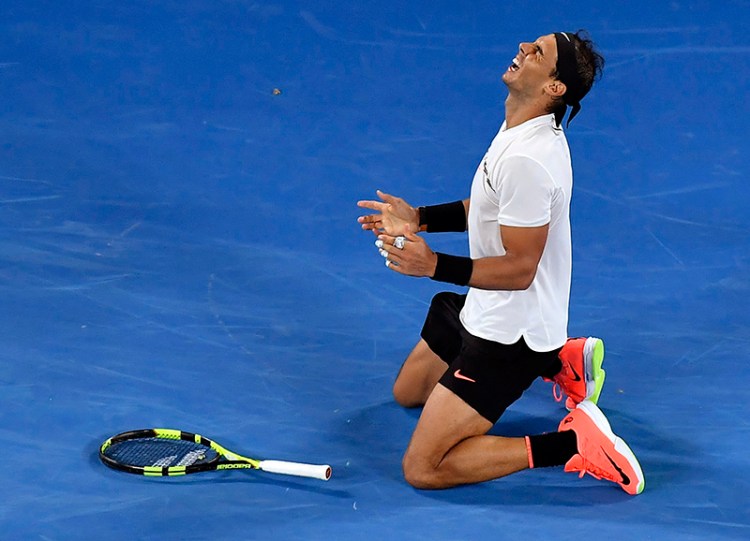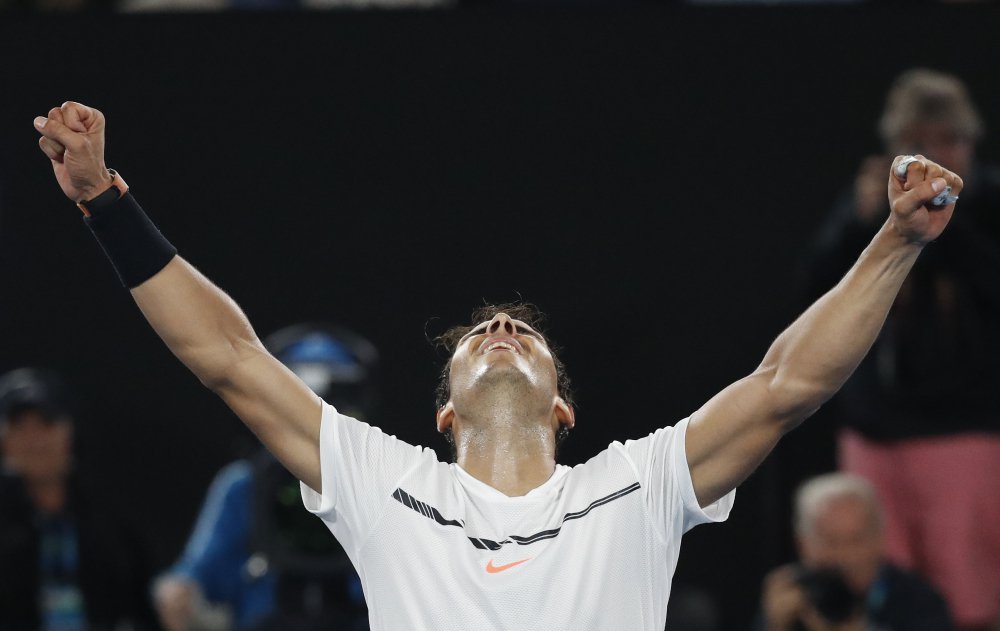Consider that 25 Januarys ago, the Australian Open held a women’s singles final between an 18-year-old and a 21-year-old, and a men’s singles final between a 22-year-old and a 26-year-old. Of course, youth reigned. That’s what youth does. In general, people needed to hoard their trophies before their bedraggled lungs turned 30.
Now look at this geezer era: The finalists include Venus Williams, five months shy of 37; two 35-year-olds, Serena Williams and Roger Federer; and Rafael Nadal, who reached 30 last June. Ponce de Leon will not present the championship trophies for obvious reasons, but this tournament rings with comebacks, sentiment and meaning. It signifies both the unmistakable greatness of all four of those players with their combined 60 Grand Slam singles titles, and the sport’s tilt toward favoring sturdier bodies and wiser ages.
The presence of Serena Williams, who will be 36 in September, is the element most predictable. She has reached eight of the last 10 Grand Slam finals dating to the 2014 U.S. Open. She has won 22 Grand Slam tournaments, tied for the most in the open era, which began in 1968. As the punishing, ball-mauling nature of the sport has huffed at those still developing, Williams has won half of her 22 Grand Slams titles in her 30s. In her semifinal, she dispatched 34-year-old Mirjana Lucic. Asked about this 30s phenomenon, as she is from time to time, Williams said: “I don’t know, I don’t know. I feel like we’ve just been going.”
It’s the other three finalists who have bolstered this event into a geriatric wonder.
Venus Williams’ presence in the last lines of the bracket is a statistical marvel. It marks her first appearance in a Grand Slam final in almost eight years, since Wimbledon in 2009. She is the oldest woman in any open-era Australian Open final. It means she has appeared in Grand Slam finals in both 1997, at the U.S. Open, and in 2017, as well as 14 other years in between.
As she faded from being a regular presence during the closing weekends of the four major tournaments, it became routine to have her wave goodbye, elegantly as ever, in early rounds. Through 16 Grand Slams from 2011 through 2014, she reached zero fourth rounds. She dealt with an autoimmune condition that saps her energy. Now, she will play her 16th Grand Slam match against her sister – their ninth in a Grand Slam final – a continuation of a singular rivalry long believed bereft of such meetings.
“Still, I know I can play,” Venus Williams said to reporters in Australia. “You just have to, like, try to figure it out, if you can get it to line up all at the same time. That’s why you get out and you try. As long as you continue to try, you have an opportunity.”
People have been continuing to try at such a rate that it’s fraught to cast this as a farewell tour. “Never say never,” Serena Williams said. “Look at us now.” Last year, German star Angelique Kerber won her first Grand Slam at the advanced age of 28 (at the Australian Open), then helped herself to another (at the U.S. Open). This decade, Grand Slam winners have included Flavia Pennetta, who was 33 when she won the 2015 U.S. Open, and first breakthroughs from 29-year-old Francesca Schiavone (2010 French Open) and 28-year-old Marion Bartoli (2013 Wimbledon).
In reaching his final, Federer pushed past a player even more telling than Venus Williams: Federer’s Swiss countryman, Stanislas Wawrinka. After never winning any of his first 35 Grand Slam tournaments, Wawrinka since has hogged three, at ages 28, 30 and 31, redefining himself as an unforgiving bulwark with a body long tested and a backhand long blasted.
When Federer and Wawrinka went wandering into a fifth set in their semifinal on Thursday, tennis intellectuals might have given Wawrinka the edge. While Federer has the most men’s Grand Slam titles ever, 17, he also closed 2016 with a five-month hiatus after having knee surgery. Questions abounded, clocks ticked. His seeding, No. 17, looked funny. Yet there he stood after match point with thorough elation and a mild celebration.
“At some point you reach a limit, and you just can’t go beyond that,” Federer told reporters in Australia, and at that limit, “You’re just not feeling free enough in your mind, in you body. That’s where both Rafa and myself said, ‘OK, enough of this already. Let’s get back to 100 percent.’ ”
Nadal halted last season multiple times. He withdrew from the French Open in the third round because of a wrist injury, and told reporters in Australia on Friday: “I remember myself crying on the car back to the hotel, no? That was a tough decision.” He closed down his year in October. “I had to stop,” he told reporters on Friday, “and it was a great decision, I think.”
He said those things after withstanding a mighty fight with a resurgent Bulgarian, Grigor Dimitrov, winning 6-3, 5-7, 7-6 (5), 6-7 (4), 6-4. He said those things as a No. 9 seed who prepared, again, somehow, to play Federer for the 35th time, and the 12th time in a Grand Slam. He spoke at a rebirth of a Grand Slam rivalry that stretches all the way back to the 2005 French Open, suddenly alongside a Williams-Williams rivalry that stretches all the way back to 1998, in a sport that can’t seem to stop stretching.
Send questions/comments to the editors.




Success. Please wait for the page to reload. If the page does not reload within 5 seconds, please refresh the page.
Enter your email and password to access comments.
Hi, to comment on stories you must . This profile is in addition to your subscription and website login.
Already have a commenting profile? .
Invalid username/password.
Please check your email to confirm and complete your registration.
Only subscribers are eligible to post comments. Please subscribe or login first for digital access. Here’s why.
Use the form below to reset your password. When you've submitted your account email, we will send an email with a reset code.